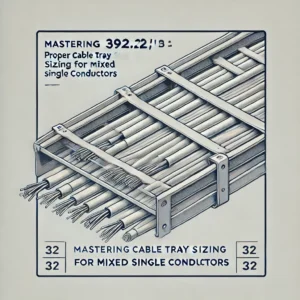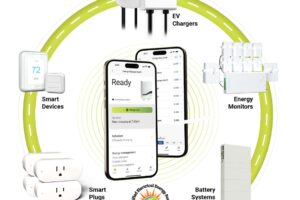Busbar Calculations Made Simple
Calculating the ampacity of copper and aluminum busbars has never been easier.
Busbars are used in switchboards, load centers, and panelboards. Busbars are generally uninsulated. The constant amperage for a bare copper wire (Cu) busbar must not exceed 1000 A sq in. of the cross-sectional area of its bar.
Aluminum (Al) busbars may not endure constant amperage exceeding 700 A sq in. of the cross-sectional area of the bar per 366.23 (A). To calculate the ampacity of a busbar, apply the following equation.
Busbar ampacity= T x W x constant, where busbar ampacity = ampacity of busbar (in A)
f = thickness (in in.)
w = width (in in.)
constant 1000 for Cu and 700 for Al
Examples:
What is the ampacity of a ¼” thick by 3″ wide Cu busbar?
Busbar ampacity= T x W x Constant
Busbar ampacity 0.25” x 3” x 1000
Busbar ampacity=0.75 x 1000
Busbar ampacity 750 A
What is the ampacity of a ½” thick by 2” wide Al busbar?
Busbar ampacity=T x W x Constant
Busbar ampacity 0.50” x 2” × 700
Busbar ampacity= 1x 700
Busbar ampacity= 700 A
NEC 392.22(B)(1)(c) Explained: Cable Tray Sizing for Mixed Single Conductors
Major Changes Coming Soon | Electrical Code Academy, Inc.
How to Apply Adjustment and Corrections to Single Insulated Conductors Using the National Electrical Code (NEC)
NECA QOD | Hot Tub Feeder and Branch Circuit
GFCI vs. AFCI: Understanding Differences and Dual Function Devices
Building your Electrical Business in a Bad Economy
CEO and Founder of Electrical Code Academy, Inc. A Virginia Corporation located in Mineral, Virginia


